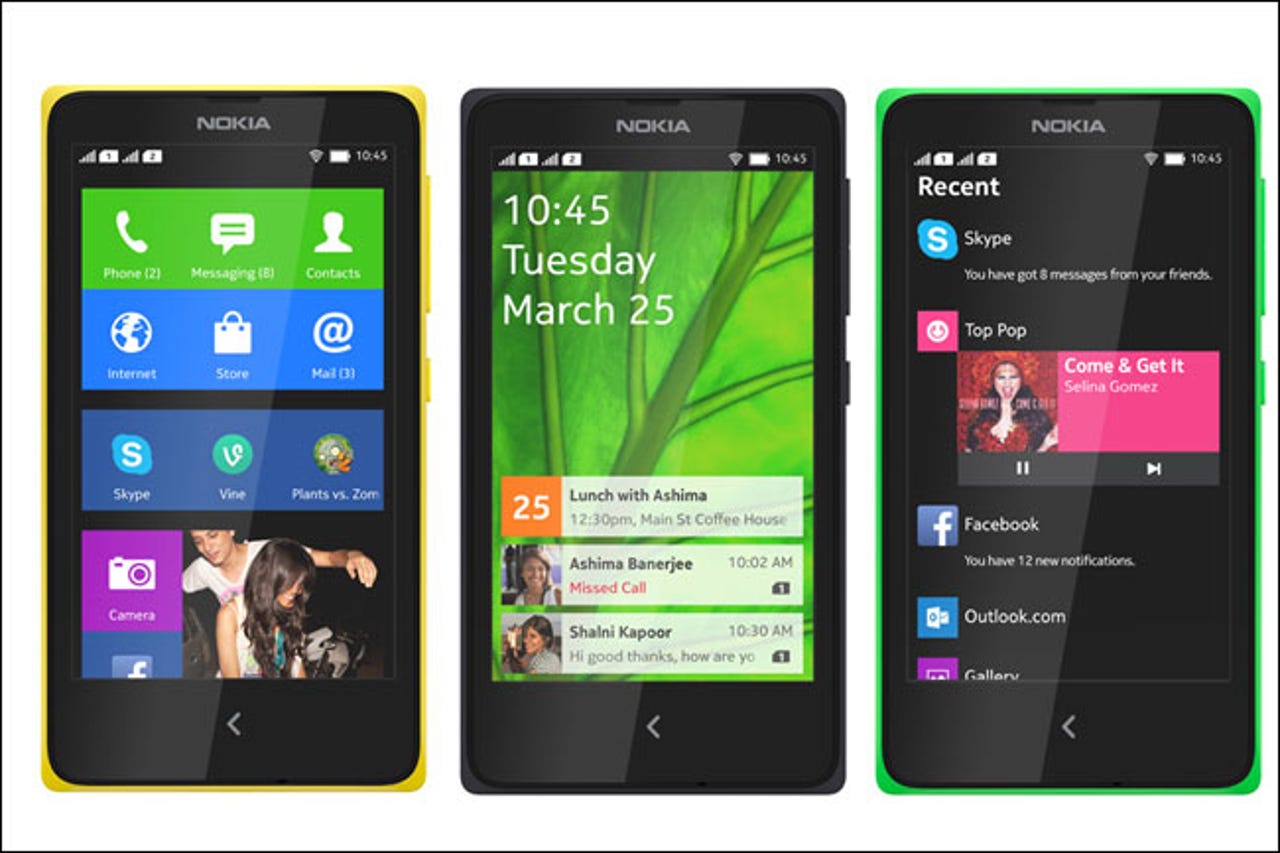X marks Nokia's attempts to reclaim its lost glory in India

It is rich irony that a phone company that once dominated the Indian market is now playing the underdog to many of the same players that upended it.

Nokia yesterday unveiled three Android-based smartphone devices in the "affordable" segment (under $160) that could put some serious heat on low-cost Indian players like Micromax and Karbonn, which have largely built their fortunes around low-cost, feature-rich Android phones.
If Nokia's strategy works, it could be a sensational comeback for a company that was the best brand in India during the cell phone revolution around 15 years ago — indeed, its name was pretty much synonymous with the cell phone here at one point — with cheap, sturdy, basic, and sleek phones equipped with an indispensable, powerful torch on the front that many of us still yearn for, especially if you happen to regularly fumble around for keys or change diapers in the dark.
Nokia was so huge here that it had a near-invincible 75 percent of the market share in the early 2000s, tanking to under 30 percent by 2010. Today, it has a measly 14.7 percent of the feature phone market (outstripped by leader Samsung, at 15.3 percent) and less than 5 percent of the smartphone market, behind Lava (4.7 percent), Sony (5 percent), Karbonn (10 percent), Micromax (16 percent), and Samsung (38 percent), according to IDC.
Its plummeting fortunes largely mirrored a global trend, but watching the company's management stumble about in a haze while Samsung and local players like Micromax and Karbonn started eating their lunch was like watching a slow-motion train wreck. Here were these nimble new players, along with the equally sure-footed leviathan surfing the emerging smartphone wave with aplomb, offering a diverse array of products while Nokia remained frozen.
It was one thing to be unable to predict the convergence of the computer and the phone, but entirely another thing to not be able to act on mounting evidence that smartphones were the unquestionable future of phone (and computer) companies. Just this year, feature phones, which have traditionally been Nokia's strength, have fizzled from 90 percent of the market to 78 percent.
So, no wonder that India has become perhaps the most important market for smartphone players, third largest in the world today, gigantic in terms of the country's 1.2 billion population potential and growing at 181 percent year over year (YoY), as of the fourth quarter of 2013, according to IDC. Yet, it is also a treacherous industry with seesawing fortunes, as Nokia's history shows.
The company sure isn't getting any breaks here. Yes, Nokia's stylish Lumia line of smartphones with fantastic cameras have impressed, but despite posting a 34 percent increase in unit sales, its market share slid from 8.79 percent to around 5 percent in just six months (for the period ending 2013 Q3), according to IDC. Today, it isn't even in the top five in smartphones.
The X series has a good chance of changing that. Its phones have Qualcomm Snapdragon dual-core processors and dual Sims. The X comes with a 4-inch IPS capacitive display, a 3MP camera ($122), and 512MB of RAM. The higher-end XL comes with a 5-inch display with 2MP front-facing camera, a 5MP rear-facing autofocus camera with flash, and 768MB of RAM ($150).
These are quality specs, and the company is finally in a prime position to contest the dominance of local players in the low-end smartphone market, such as Micromax and Karbonn.
While a company like Micromax has built a great brand and has improved its after-sales service, according to reports, it may get a real run for its money from the X phones. Take my own experience, for instance (which certainly should not be read as the average experience of a Micromax user, but at least indicative in some way).
After my beloved Samsung Galaxy S2 was smashed to the ground, I scoured the market for a cheaper alternative, vowing not to shell out an exorbitant sum for a phone that would eventually succumb to the ravages of rambunctious toddlers. After doing some research, I settled on Micromax's 116 A Canvas HD, despite warnings on blogs about cheap build quality. The specs were hard to beat at the price offered ($190).
A day after buying it, the phone kept crashing every time I touched an icon. The dealer reset it and said it should be OK. A few weeks later, I got the same result. I still haven't mustered up the energy or will to stand in a never-ending line at a Micromax service center. It may be irrational, but this ultimately spells the end of my Micromax experiment, especially with globally acclaimed phones like the Moto G finally available to Indian consumers.
If many Indians end up thinking like me — especially the hundreds of millions of rural Indians who are legacy customers and the biggest fans of Nokia's existing Asha series of feature phones — then Nokia has a real shot at winning their hearts and minds and wallets, and causing an upheaval in the Indian phone market.